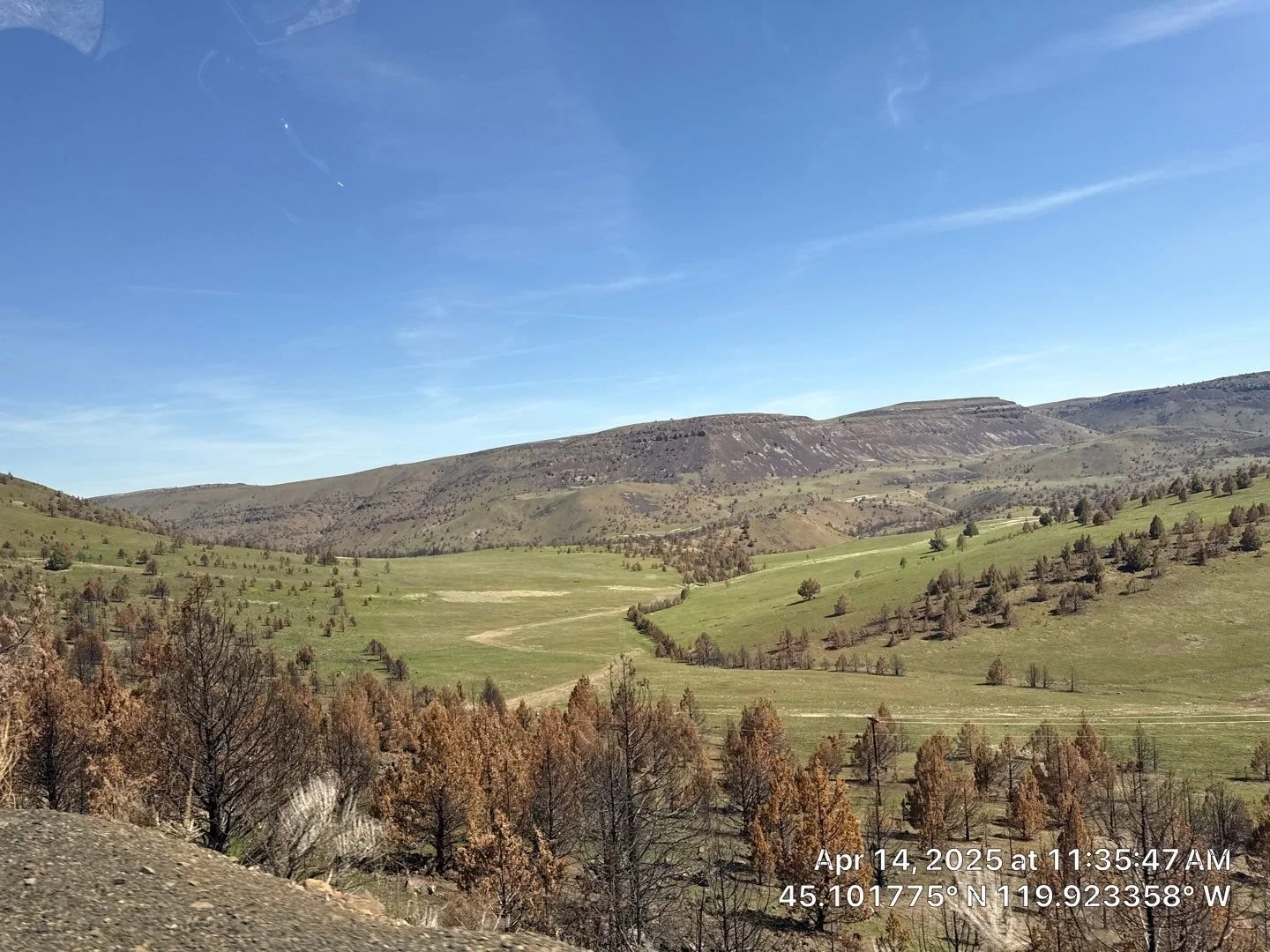Recovering from wildfire, virtually
A 2024 fire destroyed hundreds of miles of fencing in Eastern Oregon.
Invisible, virtual fences will help ranchers recover and benefit wildlife.
Ranchers in three Eastern Oregon counties lost more than 1,000 miles of fencing in 2024’s Lone Rock Fire. The fire burned 137,000 acres in five weeks, with the cost to replace the fences pegged at $25 million or more for materials and labor. That cost is unbearable for most ranchers. So Gilliam County’s Soil and Water Conservation District (SWCD) offered a new idea: virtual fencing.
Virtual fencing is a system that uses GPS, wireless communication, and animal-worn collars to create invisible boundaries for livestock. Virtual fences are being used more and more across the West, but this will be Oregon’s largest virtual fencing project to date, covering 177,000 acres in Gilliam, Morrow, and Wheeler counties. It will be the largest area of land managing cattle with virtual fencing so far in the state.
“Ranchers in Gilliam, Morrow, and Wheeler counties were looking at millions of dollars to rebuild all of the hardwire fencing ranchers lost last year in the fire,” said Dallas Hall Defrees, Sustainable Northwest’s regenerative ranching program director. “With virtual fencing, the cost is much lower, and ranchers can return their cattle to the land sooner.”
Benefits of virtual fencing
Unlike traditional barbed wire or electric fences, virtual fencing eliminates the need for physical barriers. Instead, the technology relies on GPS-enabled collars that provide audio cues and, occasionally, mild stimuli to guide livestock. Ranchers can control and modify these boundaries remotely using software. This also benefits wildlife, reducing barriers to wildlife migration.
“Virtual fencing is incredibly flexible, and much less costly than traditional fencing,” said Herb Winters, district manager at GIlliam SWCD. “This project will allow our local, family-owned ranches to get their cattle back on the land and stay in business, while keeping cows away from sensitive areas like rivers and streams. It also makes it easier for ranchers to rotate cattle to different pastures at different times, which is better for the land and the cows.”
Other benefits of virtual fencing:
Helps ranchers move their cattle quickly when catastrophic fires occur.
Hastens post-fire recovery by allowing ranchers to direct cattle to appropriate grazing areas at appropriate times.
Reduces injuries to cattle and wildlife.
Allows wildlife to move across their habitat more freely.
Reduces fencing maintenance and labor costs for ranchers.
Provides real-time data about the herd, so ranchers can make data-informed decisions.
Helping recover from a devastating fire
The Lone Rock Fire started in Gilliam County on July 13, 2024 and burned approximately 137,000 acres over nearly five weeks. In Gilliam County alone, over 300 miles of livestock fence was damaged or destroyed, with an estimated replacement cost of $9.5 million. The fire also burned many miles of fence in Wheeler and Morrow counties. This project will help private landowners install virtual fencing on 177,000 acres in all three counties, focusing on the Upper Rock Creek watershed, which flows into the Columbia River a few miles upstream of John Day Dam.
In addition to helping ranchers install virtual fencing, the project will train ranchers on how to use it, work with them to develop individualized grazing management plans for their land, support ranchers over three years as they continue to apply the new technology, and work with participating ranchers to share lessons learned and best practices with a wider audience.








Partners include: Gilliam SWCD, Sustainable Northwest, Morrow SWCD, Wheeler SWCD, U.S. Natural Resources Conservation Service, Oregon State University Extension, and the Eastern Oregon Agricultural Research Center.
Funding is being provided by the Oregon Watershed Enhancement Board in addition to the Ford Family Foundation and private donors.
Photo credits: Norie Winters/Gilliam SWCD, Andy Parker, Oregon State Fire Marshal PIO Brett Deedon, and Tom Huston
